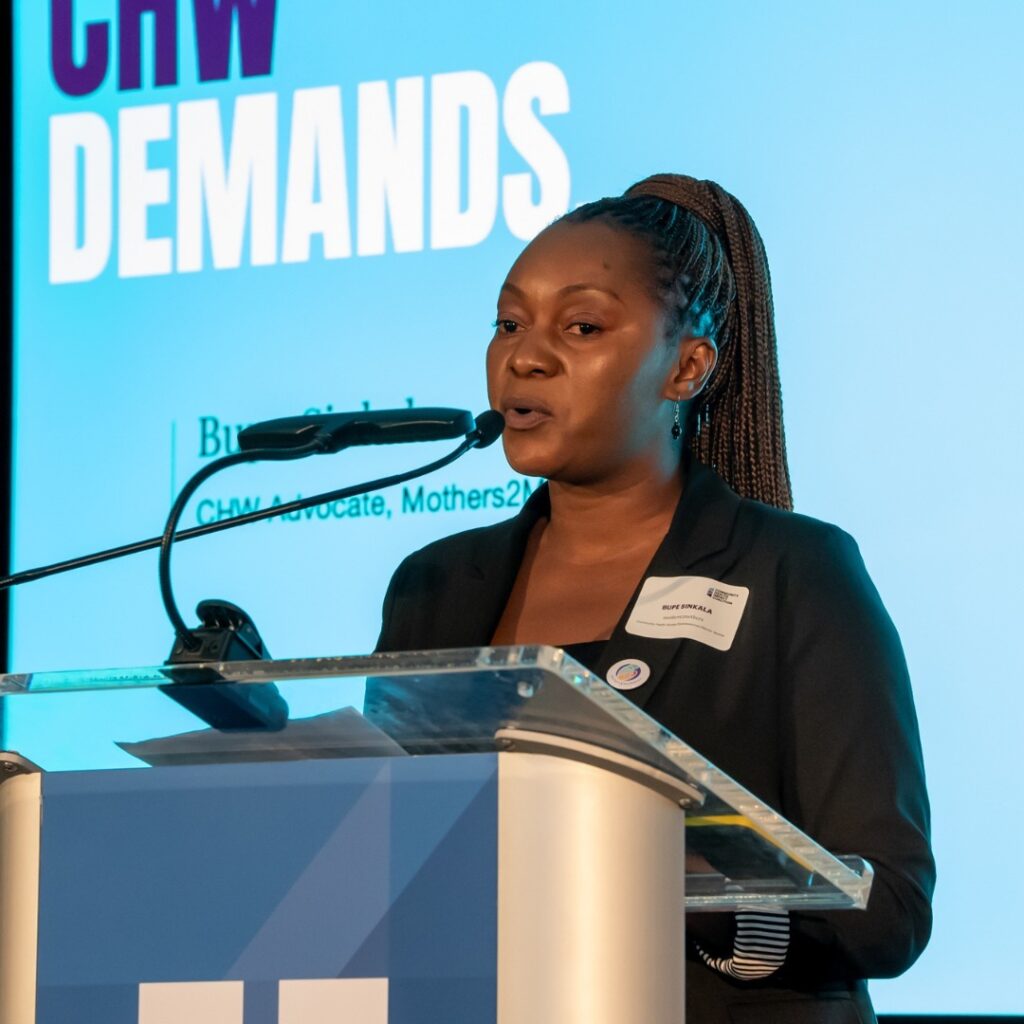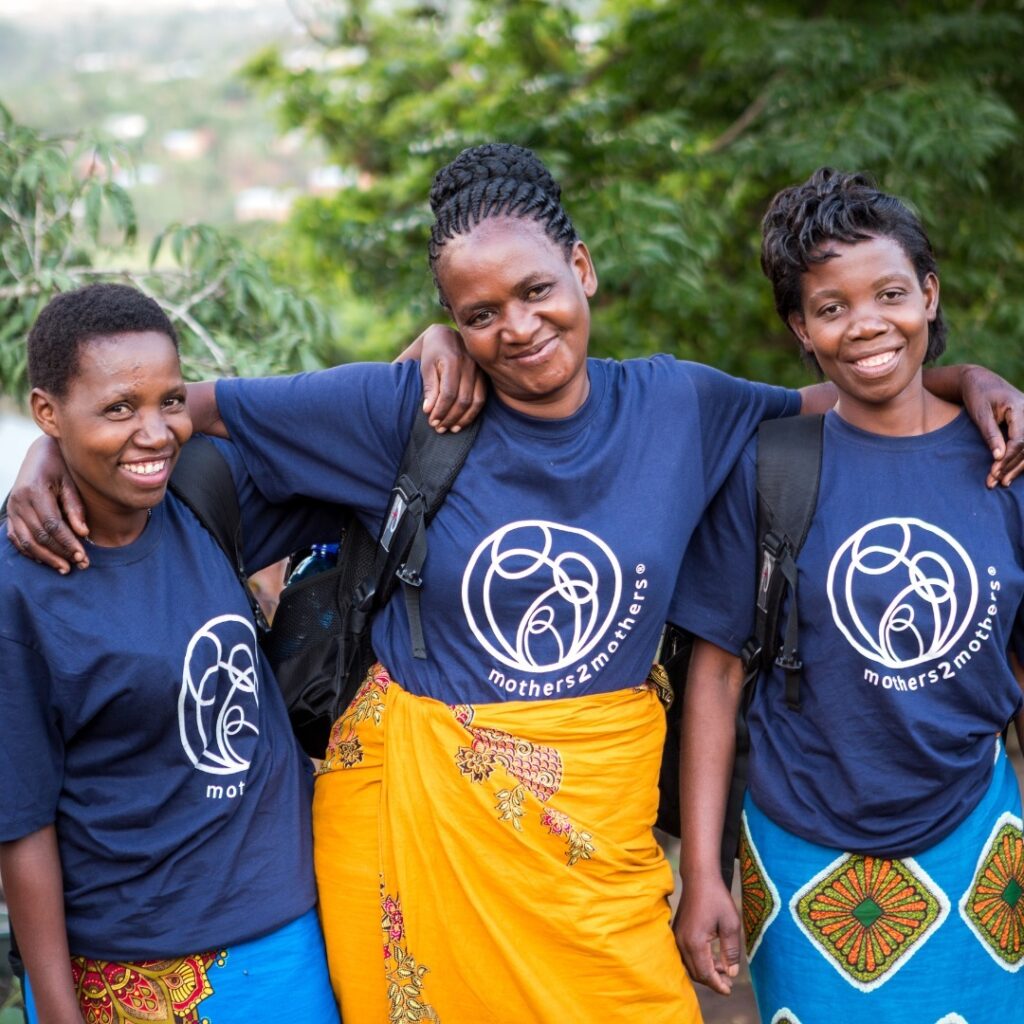Picture this moment: a bride-to-be, amidst the joyous preparations for her impending wedding, decides to undergo an HIV/AIDS test.
In an unexpected twist, the results deliver a staggering blow–they are positive. This is the story of Bupe Sinkala.
“Accepting my HIV-positive status was difficult. I chose to keep it to myself, almost pretending the results didn’t exist. I pushed the reality to the back of my mind, carrying on with my wedding preparations as if nothing had happened,” she relates.
Bupe did not share the results with her husband, but two weeks after the wedding, she fell ill. A situation that stirred concern and worry in her husband, causing nothing less than immediate medical attention.
Upon arrival at a health facility, the newlywed couple received advice to undergo HIV testing due to the symptoms exhibited by Bupe.
“As expected, mine were positive, but his came out negative because we were not intimate. Initially, he promised to stay and be on my side but….he did leave,” she says.
Now navigating life with HIV and experiencing her partner’s departure, Bupe descended into depression.
Adding to her struggles, her friends began to create distance in their friendship, marking the onset of stigma and discrimination.
“Sometimes, you find that they’ll give you your cutlery, you can’t share the same plates, or you can’t just do certain things with someone who’s HIV positive. The situation worsens with friends; initially, they may feign acceptance, only to reveal their true colors later on,” she shares.

Bupe Sinkala speaks during a conference in Lusaka, Zambia. Courtesy Photo.
To overcome the stigma that came with living with the virus, Bupe started to look for a space to belong. It was then that she joined Mothers to Mothers, an all-mothers-led organization that deals with women living with HIV.
“I realized that living with HIV was not the end of the world. I sought ways to leverage my status to support others like me, leading me to the Mothers to Mothers initiative. I found it particularly compelling as a woman because I understood firsthand what it meant to navigate life with a positive HIV status,” she shares.
The model trains and employs local women living with HIV/AIDs like Bupe, as community health workers who provide services in under-resourced health clinics and door-to-door in communities.
Also known as mentor mothers, these community health workers educate and support women living with the virus to overcome barriers to medical care, and ensure they receive the integrated primary health care services they need especially for HIV/AIDs.
WHO recommends that every person at risk of HIV should access testing, and people at increased risk of acquiring HIV like unborn babies, and their mothers should seek comprehensive and effective HIV prevention, and treatment services
According to Mishear Bwalya, the Senior program manager at Mothers to Mothers, the model focuses on preventing mother-to-child transmission of HIV, especially to expectant mothers living in settings of marginalization and poverty.
“We extend support on health conditions that disproportionately impact women living with the virus in low resource settings, that is to say, Malaria, Tuberculosis(TB), and noncommunicable diseases,” he notes.
After the mentor mothers have received the required training, they are then deployed at both a health facility and community level to provide psychosocial support to their fellow mothers also living with the virus.
“To become a community health worker, you must be a woman living with HIV and you have accepted your status. This is because they share their personal experiences or stories as living examples to help another woman cop with the stress that comes with living a positive life,” says Bwalya
At the health facility, mentor mothers are placed at the Maternal and Child Health Department (MCH) to identify mothers who come in for antinental services. At this level, mothers get their first contact with mentor mothers.
“When a mother comes, I screen her for breast cancer, cervical cancer, Tuberculosis, and Hypertension, provide health education on HIV and SRHR, and most importantly get her tested for HIV and if found positive, she is enrolled into the program, and immediately becomes my responsibility,” Bupe relates.
For subsequent interaction, the mentors come from the communities they are saving. Here they offer community visits to ensure that once a mother is on treatment, she can adhere to it.
“We do this follow-up to ensure that the expected baby remains negative, is born negative, and graduates after two years with a negative HIV status,” says Bupe.

A group of women await coaching from the Mother-to-Mother team. Courtesy Photo.
According to the World Health Organisation, HIV continues to be a major global public health issue, claiming 40.4 million lives with 380,000 concentrated in Africa.
In a global population of 39 million living with HIV, women account for 20 million, and children, 1.5 million. In all regions, Africa ranks the highest with a count of 25.6 million people living with the virus.
UNAIDs points out that HIV is spread through a variety of routes, including mother-to-child transmission, interchange of sexual contact, and exchange of bodily fluids like blood, semen, vaginal fluids, anal mucus, and breast milk
This weaves a complex web that demands attention, especially on women as they are involved in almost every transmission stage.
Globally, an estimated 1.3 million women and girls living with HIV become pregnant each year. In the absence of intervention, the rate of transmission of HIV from a mother living with HIV to her child during pregnancy, labor, delivery, or breastfeeding ranges from 15% to 45%.
According to Dr. Miya Yunus, the Chief Programs and Capacity Development Officer at TASO in Uganda, there is a need for quick intervention on how the virus is spreading among women and children “If we are to produce an HIV-free generation.”
“We must focus on comprehensive strategies that prioritize the prevention of mother-to-child transmission, ensuring that every mother and child receives the necessary support and resources. It’s not just a medical imperative; it’s a commitment to building a healthier future for generations to come,” he explains.
Professor Nkandu Luo, a microbiologist at the University of Zambia, explains the significance of women in the context of HIV/AIDS in Africa. She attributes their prominence to the limited access to technology, a tool crucial for making informed decisions about their health.
“Women should have the empowerment to explore crucial health information, such as HIV, online. This not only ensures awareness of available free services like testing, counseling, and ARVs but also equips them with the knowledge of where to seek essential assistance.”
She further notes that women often take high risks, sometimes due to challenging circumstances thus leading to heightened vulnerability, where the likelihood of contracting HIV increases, including from other sexually transmitted infections from sexual partners.”
The global health sector strategy on HIV aims to reduce HIV infections from 1.5 million in 2020 to 335,000 by 2030, and deaths from 680,000 in 2020 to under 240,000 in 2030.

Women mentors pose for a group photo. Courtesy photo.
The impact!
The impact is tremendous. The model, in collaboration with health ministries, is propelling the 95-95-95 targets into reality, ensuring pregnant and breastfeeding mothers are informed, tested, and treated.
Since its inception in 2001, the program has yielded quite immense benefits from economic to social and medical.
It has impacted more than 15 million people with access to health services, over 1,200 women living with HIV have been employed directly as mentors and mothers, and 98% of the clients who tested positive for HIV accessed treatment, compared to a benchmark of 76% in sub-Saharan Africa.
Bupe reflects on her journey of connecting with hundreds of women, altering mindsets from despair to hope, and achieving a near-elimination of mother-to-child transmission.
“We have achieved virtual elimination of mother-to-child transmission of HIV among our enrolled clients for nine consecutive years, with a transmission rate of just 0.5%. I think this is what stands out for me, “ she relates.
The model that serves more than 20 rural clinics operates in five provinces of Zambia, that is to say, Lusaka, Southern, Eastern, Central, Copenhagen, and Northwestern provinces. It has also expanded to ten other African countries like Uganda (Eastern part), DRC Congo, Malawi, and Nigeria.
In addition, the model has registered HIV-free stigma communities in the areas of operation.
“We have built resiliency and self-efficacy among women living with the virus. Many are accepting their status and can share it with their families. The issue of stigma and discrimination was quite big before, but you find that in the communities and facilities where we operate, we can break these barriers,” he adds.
Even though the intervention is positively welcomed in some communities, there is still a challenge of resistance as some women refuse to disclose their status, a thing that is attached to
behavior change and takes a process.
This makes the process difficult as disclosure plays a vital role in curbing HIV-related issues like mental health, as Dr. Miya explains.
“Once you disclose, then people know what challenges you are facing and what kind of assistance you need. Once people are open to their health challenges, they’ll be able to participate in the design of HIV programming, and interventions. Silence will exclude them”
Even with the ongoing numbers of HIV among women, Mishear holds onto hope. He is confident that access to information and support can eradicate the HIV epidemic in Africa.
“ I believe that HIV mother-to-child transmission is workable and if we scale it down, we can have an HIV-free generation. It is not only important for our communities but also for development as a whole, because nations and governments are spending so much on treatment, yet prevention is better than cure,” he says.
For women like Bupe who have walked the journey, resilience, self-acceptance, and self-love is the way to survive.
“ Do not look down on yourself. You are as special, intelligent, and capable as anyone who is not HIV positive. You can also do anything in this world. You can still have as many negative children as you want as long as you take your medication because when you take your medication your viral load becomes undetectable and you cannot transmit either to your partner or your babies,” she concludes.
Recent News
© 2022 - Media Challenge Initiative | All Rights Reserved .


